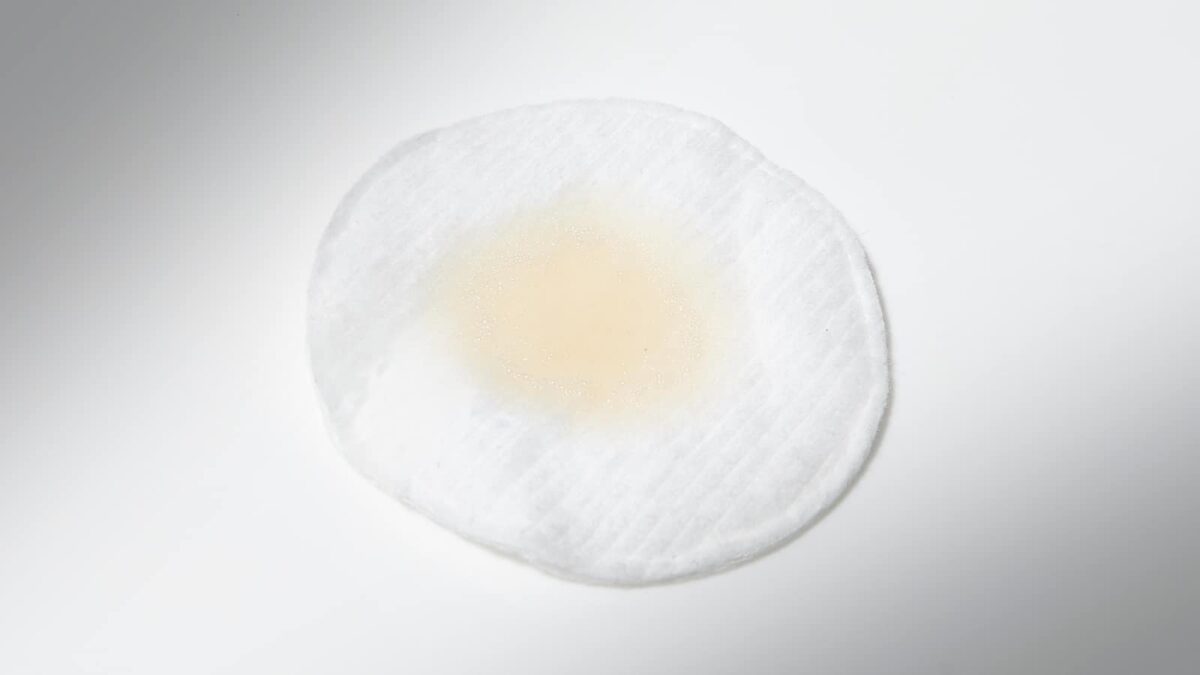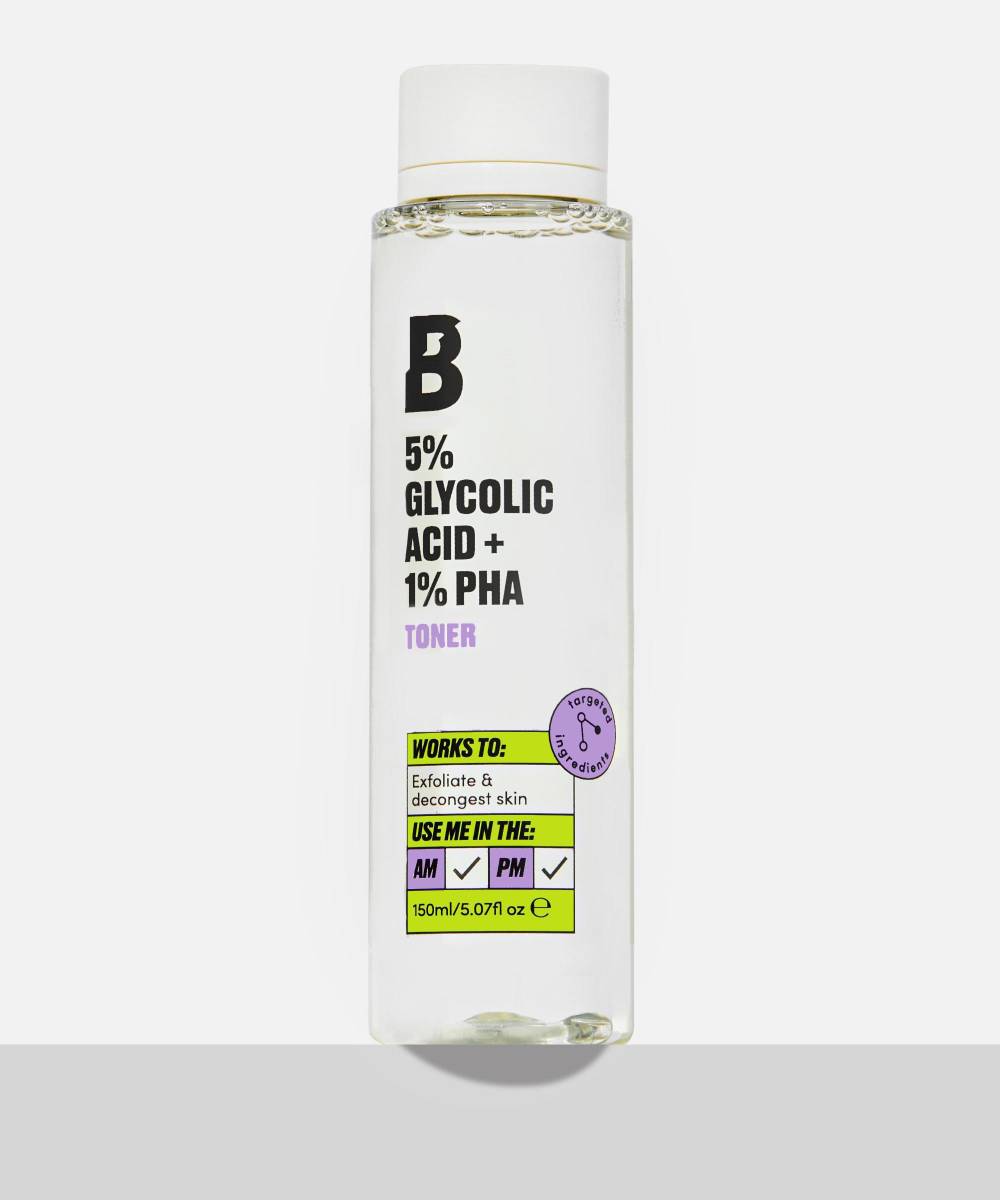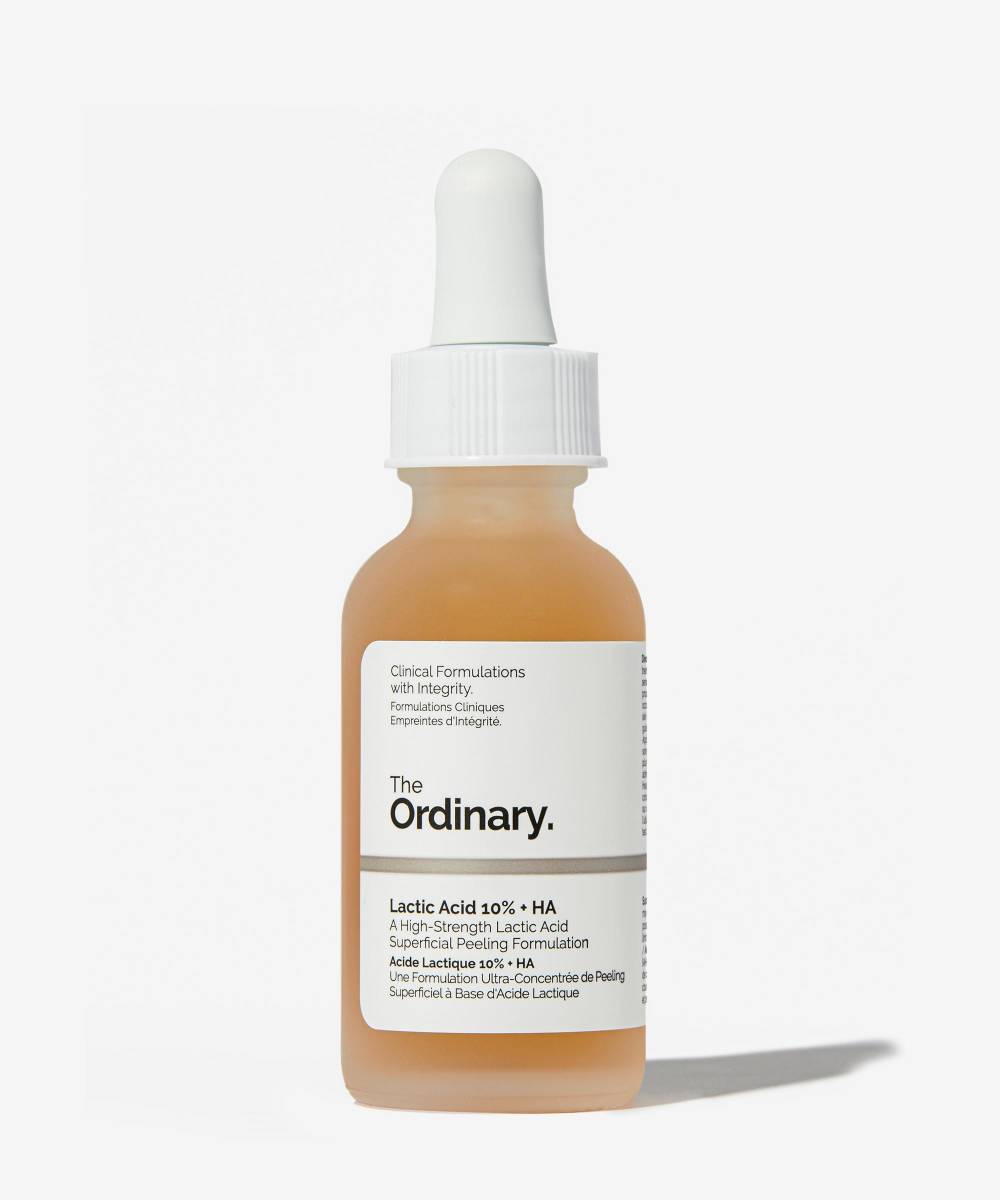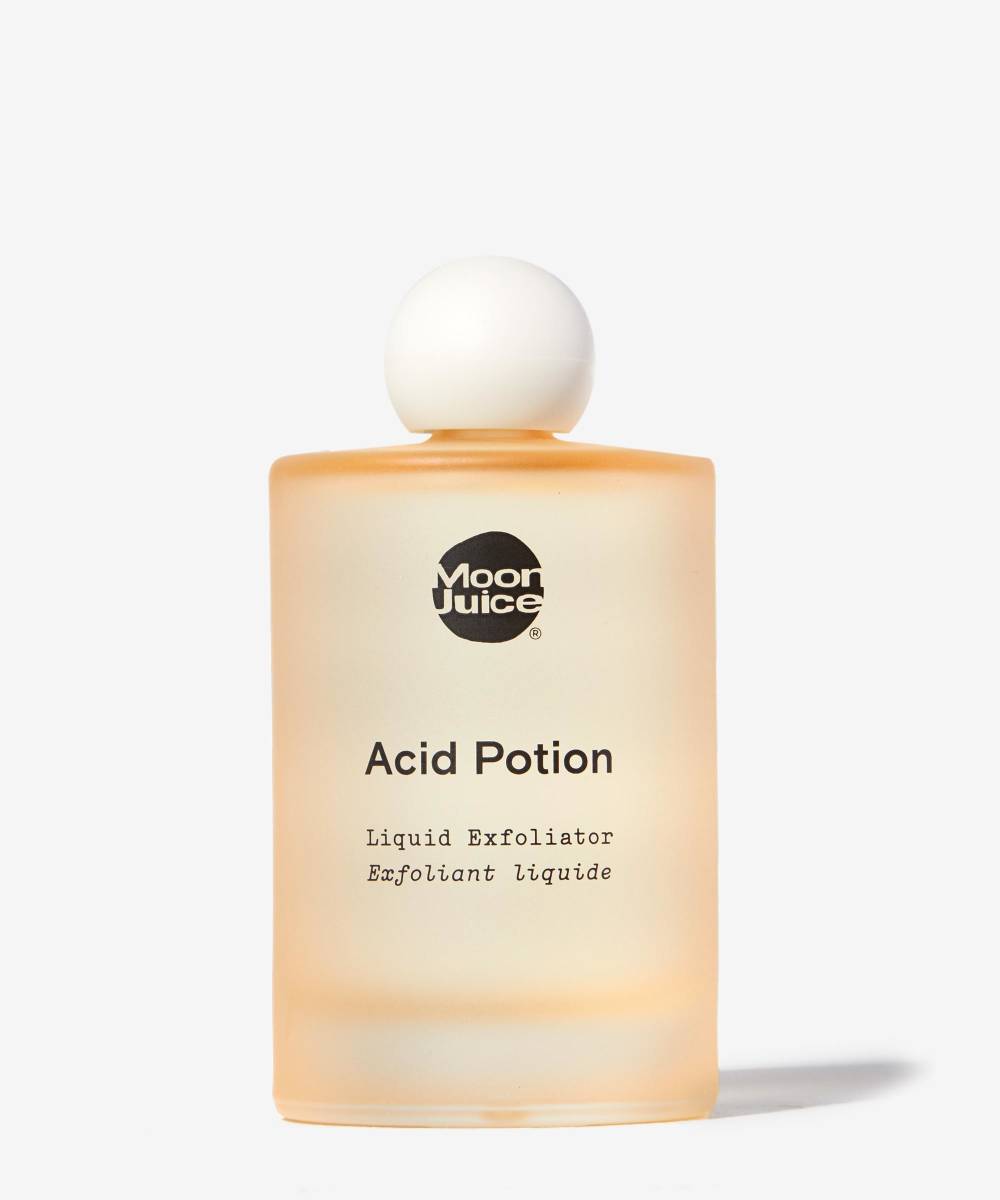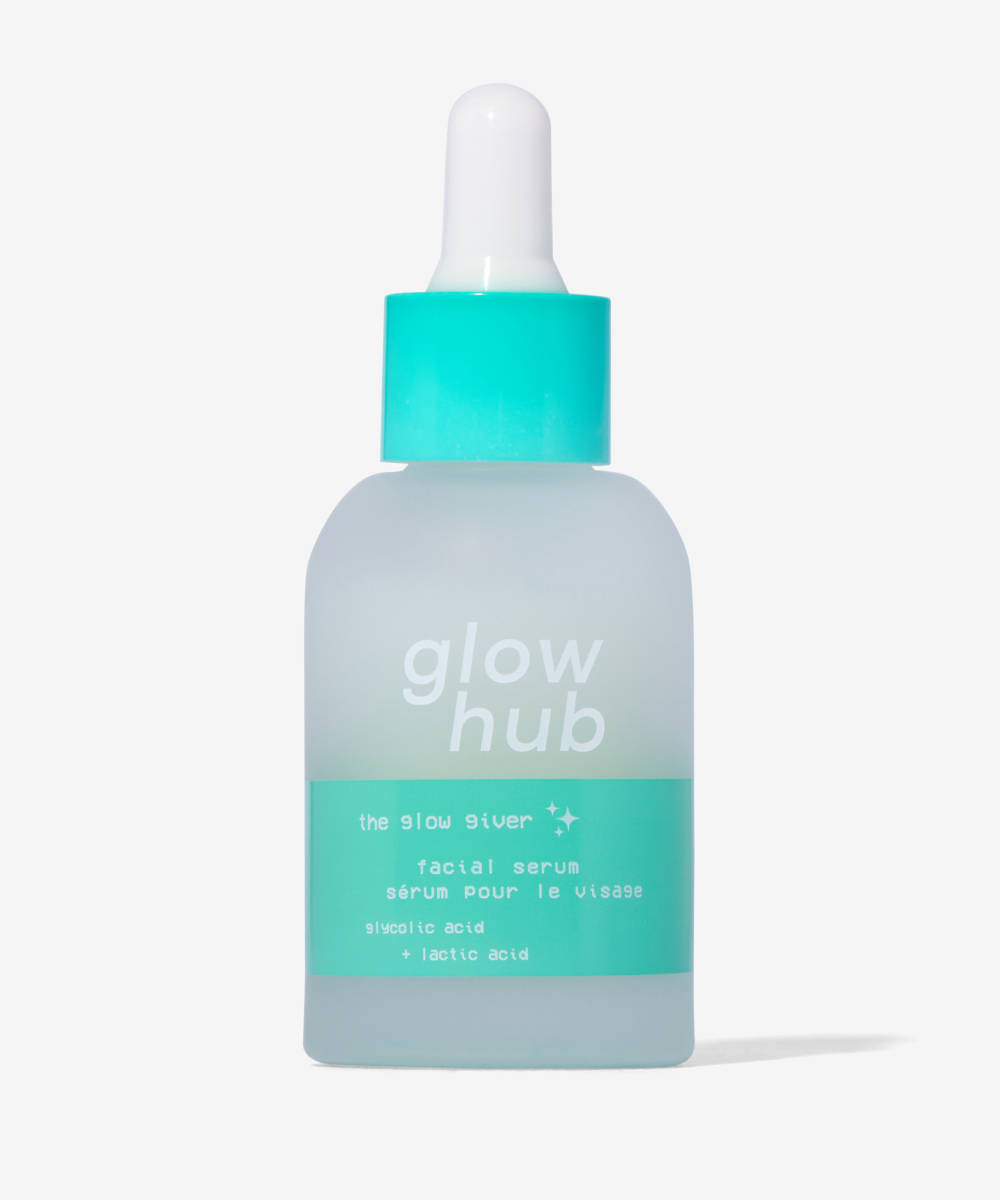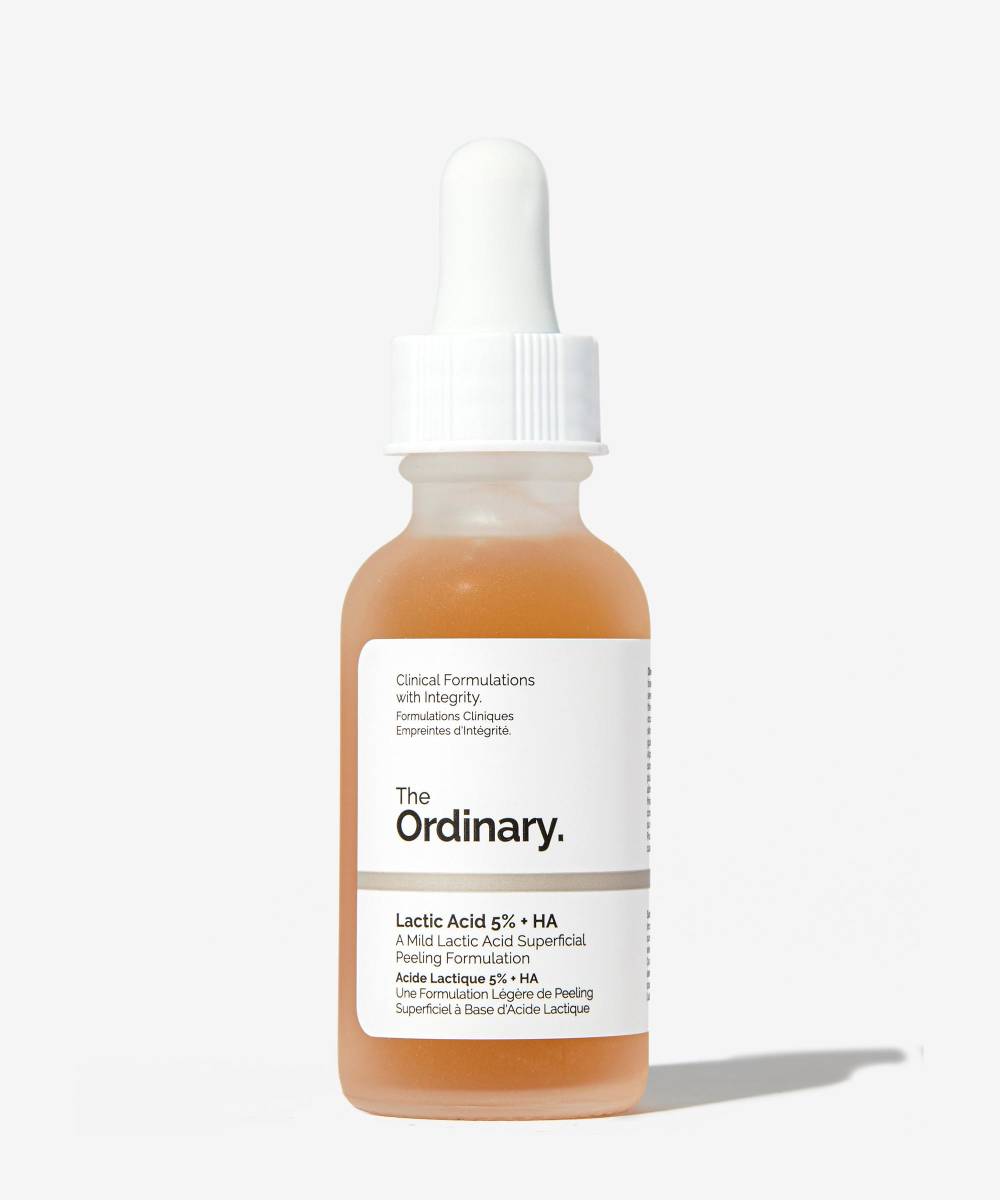There are all sorts of ways to exfoliate skin, but if you’re looking for a gentler alternative to scrubbing, then chemical exfoliants (often referred to as alpha hydroxy acids (AHAs) or beta hydroxy acids (BHAs) are a great option. AHAs like glycolic acid and lactic acid are some of the more well-known exfoliating ingredients, and can be found in many cleansers, serums, toners, and masks. You may already be familiar with glycolic acid, but today we’re shining the spotlight on lactic acid, which is a slightly gentler AHA, perfect for dry and sensitive skin types.
Scroll down to learn everything you need to know about lactic acid.
What is lactic acid?
Lactic acid is an AHA which works by breaking the bonds that hold dead, dry skin cells. Skin typically sheds its own dead skin cells (a process known as desquamation), but as we age, this process slows down – and things like sun damage, ageing, and genetics can slow it down. This buildup of dead skin can make skin appear dull, adds texture to skin, and can clog in pores, contributing to decongestion. Regularly using an AHA can help to support and speed up this process, keeping skin smooth, bright, and clear. Lactic acid has a fairly large molecule size, which means it doesn’t penetrate as deep as glycolic acid and therefore it a little more gentle, and therefore well suited to sensitive skin or for those who are new to using acids in their skincare routine.
How does lactic acid work?
Lactic acid works by promoting the shedding of dead skin cells from the top layers of the skin by breaking the bonds that hold the dead skin cells. By removing this buildup, lactic acid helps to brighten and smooth skin, and reduces the chance of dead skin cells clogging up pores (which can lead to breakouts). Additionally, lactic acid has benefits for dry skin as it’s naturally found in the skin’s natural moisturising factor – it helps the skin to retain moisture.
What does lactic acid do?
There are multiple benefits to using lactic acid in your skincare routine:
1. Lactic acid is hydrating because it binds moisture to skin and encourages the skin to produce more ceramides, which strengthen the skin barrier.
2. By removing dead skin cells and renewing the skin with new cells, lactic acid helps to fade signs of discolouration and hyper-pigmentation.
3. Lactic acid can improve the signs of early skin aging caused by sun exposure, such as fine lines, wrinkles, and rough texture.
When should you use lactic acid ?
Like all exfoliants, lactic acid should not be overused as this can increase skin sensitivity. Masks, toners, and peel treatments with lactic acids tend to be fairly strong so start off by using them just once a week and gradually increase depending on how your skin feels. Lactic acid serums can be used more frequently, but start off using every other day before you increase to daily use. You’ll know if you’re over-using lactic acid because your skin will feel a bit prickly and sensitive when you apply it (and other active ingredients).
Lactic acid is best applied in your evening routine. After applying lactic acid you can continue with the rest of your routine, but avoid layering it with other exfoliating acids (like glycolic or salicylic), retinoids, niacinamide, and vitamin C – this will definitely increase skin sensitivity and may make the ingredients ineffective. If you don’t already, ensure that you use sunscreen daily because using AHAs increases skin’s sensitivity to the sun.
